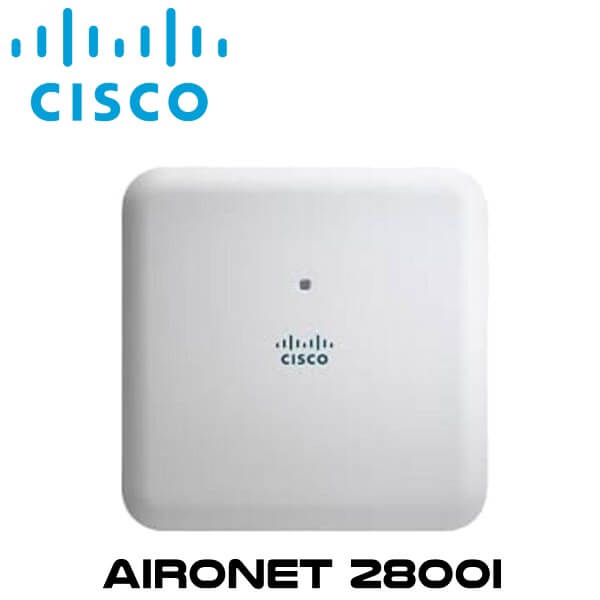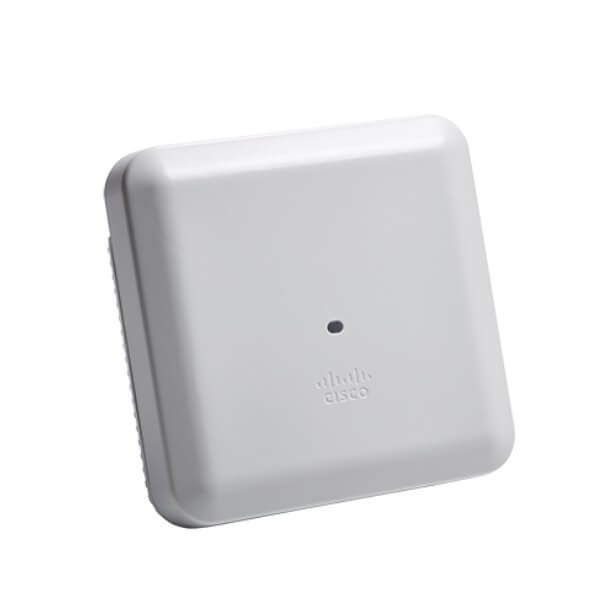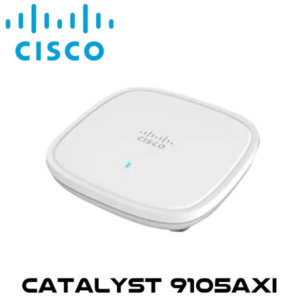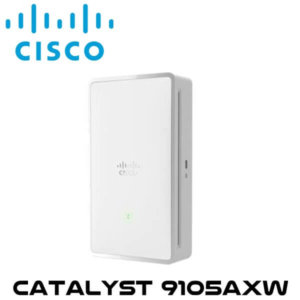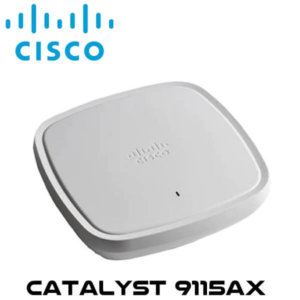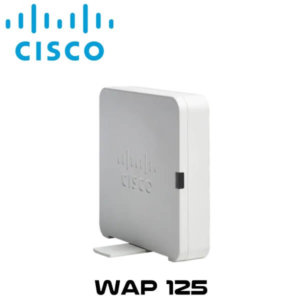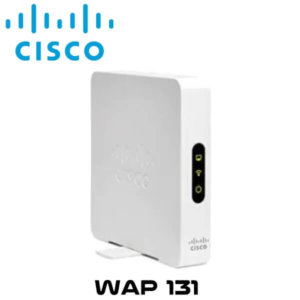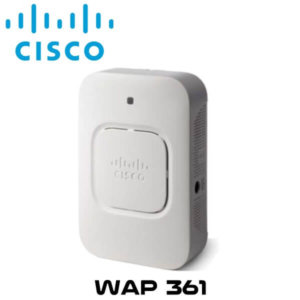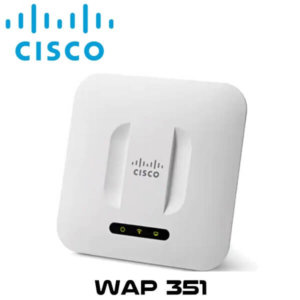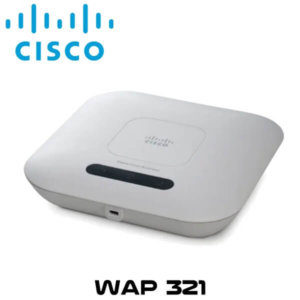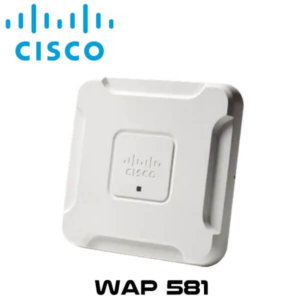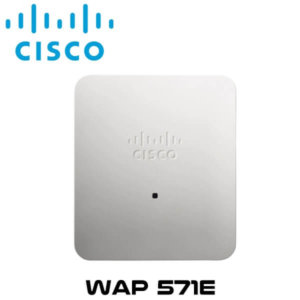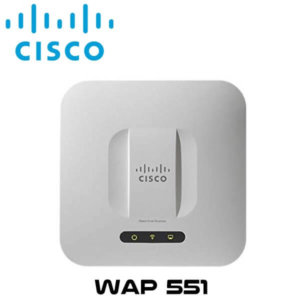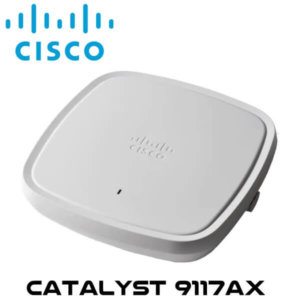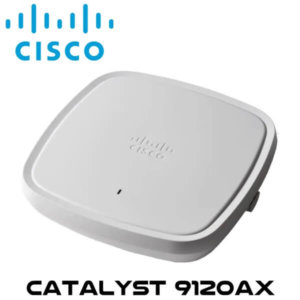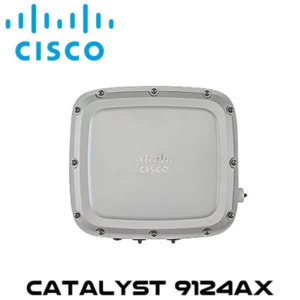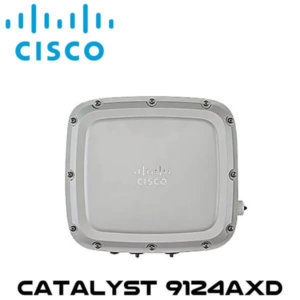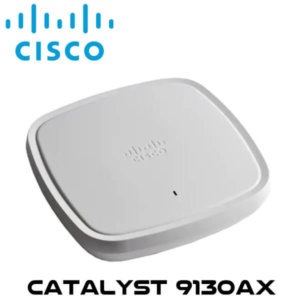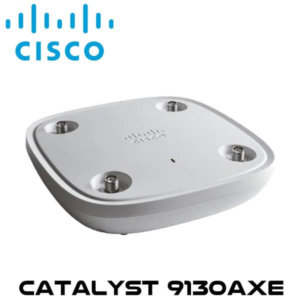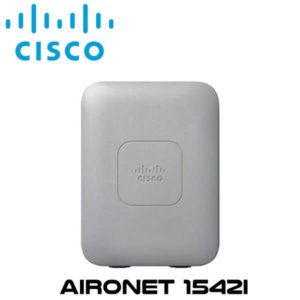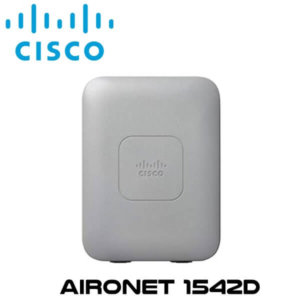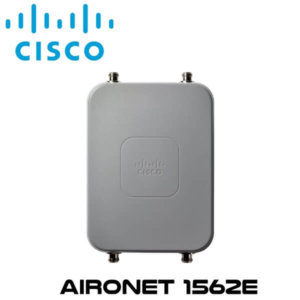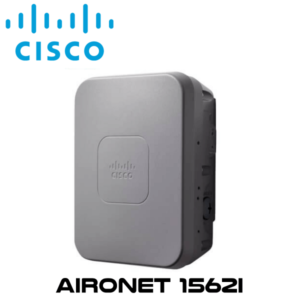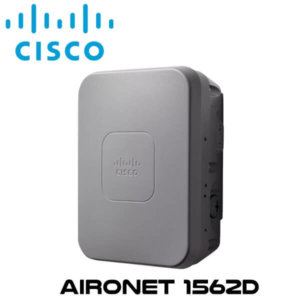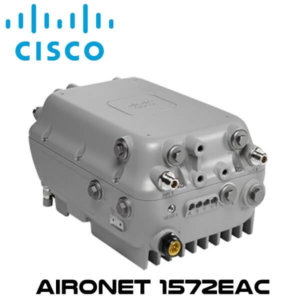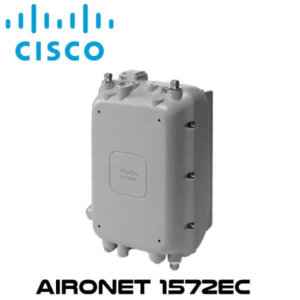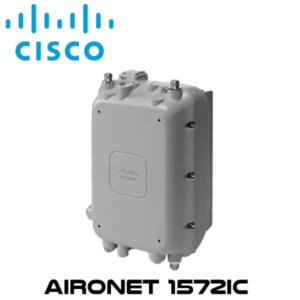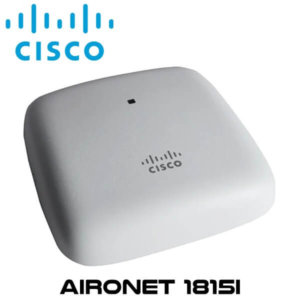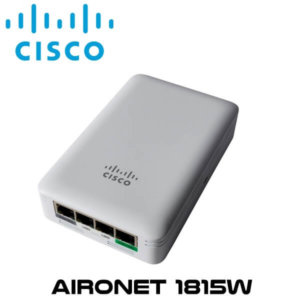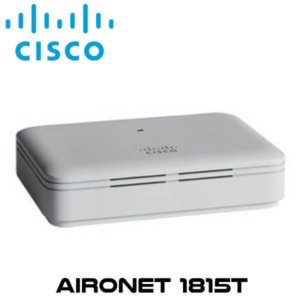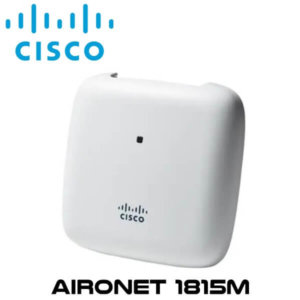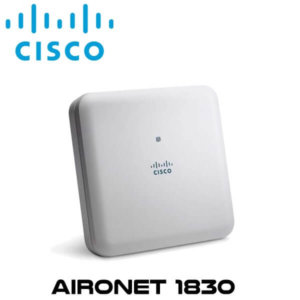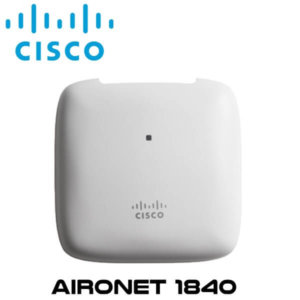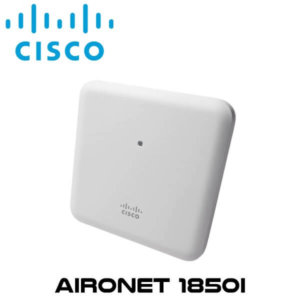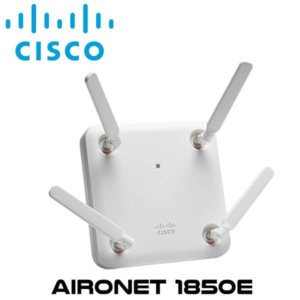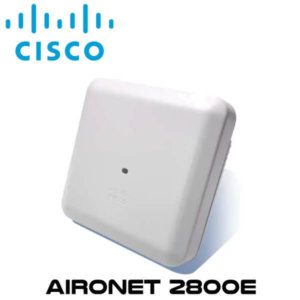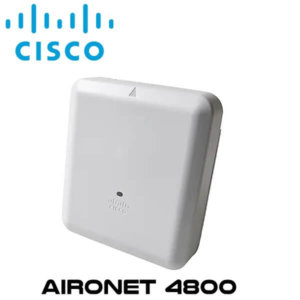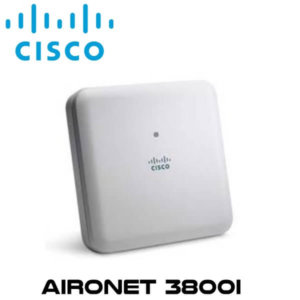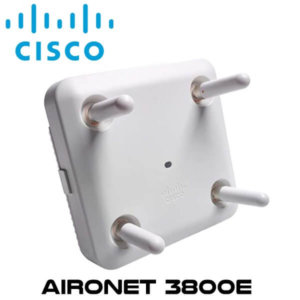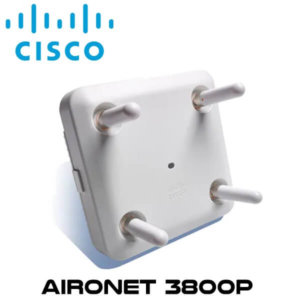Description
Cisco Aironet2800i Access Point Kenya
The Cisco Aironet2800i Kenya access point go beyond getting ready for the new standard, providing the ultimate in flexibility and versatility. Ideal for large enterprise organizations that rely on Wi-Fi to engage with customers, Cisco Aironet2800i Kenya is a hands-off product that’s intelligent enough to make decisions based on end-device activities and usage. This automation allows you to devote time to other pressing matters, secure in the knowledge that your Wi-Fi network is performing to its utmost potential. The Cisco Aironet2800i Kenya is packed with the features and capabilities that have made Cisco the industry leader, at a price point that is ideal for managing wireless growth, capacity, and coverage gaps in dense indoor environments.
With this Cisco WiFi Kenya, you can secure remote workers or the micro-office. Any Cisco Aironet or Catalyst access point can function as an OfficeExtend Access Point (OEAP). With an OEAP, an employee at home or in a temporary micro-office will have access to the corporate SSID and the corporate network without the need to set up a VPN or have any advanced technical know-how. Cisco User Defined Network, a feature available in Cisco DNA Center, allows IT to give end users control of their very own wireless network partition on a shared network. End users can then remotely and securely deploy their devices on this network. Perfect for university dormitories or extended hospital stays, Cisco User Defined Network grants both device security and control, allowing each user to choose who can connect to their network.
The Wi-Fi 6 readiness dashboard is a new dashboard in the Assurance menu of Cisco DNA Center. It will look through the inventory of all devices on the network and verify device, software, and client compatibility with the new Wi-Fi 6 standard. After upgrading, advanced wireless analytics will indicate performance and capacity gains as a result of the Wi-Fi 6 deployment. This is an incredible tool that will help your team define where and how the wireless network should be upgraded. It will also give you insights into the access point distribution by protocol (802.11 ac/n/abg), wireless airtime efficiency by protocol, and granular performance metrics.
Features
High-density experience
Building on the Cisco Aironet heritage of RF excellence, the Cisco Aironet2800i Kenya run on a purpose-built, innovative chipset with a best-in-class RF architecture. This chipset provides a high-density experience for enterprise networks designed for mission-critical, high-performance applications.
802.11ac Wave 2 support
Cisco Aironet2800i Kenya provides a theoretical connection rate of up to 2.6 Gbps per radio which roughly double the rates offered by today’s high-end 802.11ac access points.
High Density Experience (HDX)
Best-in-class RF architecture, this Cisco WiFi Kenya provides high-performance coverage for a high density of client devices, giving the end user a seamless wireless experience. HDX includes features such as custom hardware in 802.11ac Wave 2 radios, Cisco CleanAir, ClientLink 4.0, cross-access point noise reduction, and an optimized client roaming experience.
Multiuser Multiple-Input Multiple-Output (MU‑MIMO) technology
Supporting three spatial streams, MU-MIMO enables Cisco Aironet2800i Kenya to split spatial streams between client devices, to maximize throughput.
Flexible Radio Assignment
Allows the access points to intelligently determine the operating mode of serving radios based on the RF environment. The access points can operate in the following modes:
- 4-GHz and 5-GHz mode: One radio will serve clients in 2.4-GHz mode, while the other serves clients in 5-GHz mode
- Dual 5-GHz mode: Both radios inside the access point operate on the 5-GHz band, maximizing the benefits of 802.11ac Wave 2 and increasing client device capacity.
- Security Monitoring and 5-GHz mode, one radio will serve 5-GHz clients, while the other is scanning the full spectrum for wIPS attackers, CleanAir interferers, and rogue devices.
Dual 5-GHz radio support
Cisco Aironet2800i Kenya enables both radios to operate in 5-GHz client serving mode, allowing an industry-leading 5.2 Gbps (2 x 2.6 Gbps) over-the-air speeds while increasing client capacity.
Smart antenna connector
An intelligent second physical antenna connector is included on Cisco Aironet2800i models with an external antenna. This connector provides advanced network design flexibility for high-density and large open-area environments such as auditoriums, convention centers, libraries, cafeterias, and arenas/stadiums, allowing two sets of antennas to be connected and active on a single access point.
160-MHz channel support
This Wifi Kenya supports channels up to 160 MHz wide, Dynamic Bandwidth Selection allows the access point to dynamically switch between 20-, 40-, 80-, and 160-MHz channels, depending on the RF channel conditions, providing the industry’s best-performing wireless network.
Optimized access point roaming
Helps ensure that client devices associate with the access point in their coverage range that offers the fastest data rate available.
Zero-impact Application Visibility and Control
Cisco Aironet2800i Kenya uses dedicated hardware acceleration to improve the performance of line-speed applications such as Application Visibility and Control.
Auto Link Aggregation (LAG) support
802.3ad (LACP) compliant, allowing both Gigabit Ethernet interfaces to automatically LAG, increasing overall throughput to the access point.
ClientLink 4.0
Cisco ClientLink 4.0 technology to improve downlink performance to all mobile devices, including one-, two-, and three-spatial-stream devices on 802.11a/b/g/n/ac while improving battery life on mobile devices such as smartphones and tablets.
CleanAir 160 MHz
With Cisco CleanAir technology, enhanced with 160-MHz channel support, Cisco Aironet2800i Kenya provides proactive, high-speed spectrum intelligence across 20-, 40-, 80-, or 160-MHz-wide channels to combat performance problems due to wireless interference
Cisco Mobility Express
Flexible deployment mode through the Cisco Mobility Express Solution is ideal for medium-sized deployments and can support up to 100 access points. Easy setup allows the Cisco Aironet2800i Access Points to be deployed on networks without a physical controller.
Specifications
| Software |
|
||||||
| Supported wireless LAN controllers |
|
||||||
| 802.11n version 2.0 (and related) capabilities |
|
||||||
| 802.11ac Wave 1 capabilities |
|
||||||
| 802.11ac Wave 2 capabilities |
|
||||||
| Integrated antenna |
|
||||||
| External antenna (sold separately) |
|
||||||
| Smart antenna connector |
|
||||||
| Interfaces |
|
||||||
| Indicators | Status LED indicates boot loader status, association status, operating status, boot loader warnings, boot loader errors | ||||||
| Dimensions (W x L x H) | Access point (without mounting brackets): 2802I: 8.66” x 8.68” x 2.17”, 2802E: 8.66” x 8.77” x 2.50” | ||||||
| Weight |
|
||||||
| Input power requirements |
|
||||||
| Power draw |
|
||||||
| Environmental |
|
||||||
| System memory |
|
||||||
| Warranty | Limited lifetime hardware warranty | ||||||
| Available transmit power settings | 2.4 GHz
|
5 GHz
|
|||||
| Frequency band and 20-MHz operating channels | A (A regulatory domain):
B (B regulatory domain):
C (C regulatory domain):
D (D regulatory domain):
E (E regulatory domain):
F (F regulatory domain):
G (G regulatory domain):
H (H regulatory domain):
|
I (I regulatory domain):
K (K regulatory domain):
N (N regulatory domain):
Q (Q regulatory domain):
R (R regulatory domain):
S (S regulatory domain):
T (T regulatory domain):
Z (Z regulatory domain):
|
|||||
| Maximum number of nonoverlapping channels | 2.4 GHz
|
5 GHz
|
|||||
| Note: This varies by regulatory domain. Refer to the product documentation for specific details for each regulatory domain. | |||||||
| Compliance standards |
|
||||||
| Data rates supported |
|
||||||
| Transmit power and receive sensitivity | |||||||
| Spatial streams | 5-GHz radio | 2.4-GHz flexible radio | 5-GHz flexible radio | ||||
| Total Tx power (dBm) | Rx sensitivity (dBm) | Total Tx power (dBm) | Rx sensitivity (dBm) | Total Tx power (dBm) | Rx sensitivity (dBm) | ||
| 802.11/11b | |||||||
| 1 Mbps | 1 | NA | NA | 23 | -101 | NA | NA |
| 11 Mbps | 1 | NA | NA | 23 | -88 | NA | NA |
| 802.11a/g | |||||||
| 6 Mbps | 1 | 23 | -93 | 23 | -91 | 23 | -92 |
| 24 Mbps | 1 | 23 | -89 | 23 | -87 | 23 | -89 |
| 54 Mbps | 1 | 23 | -81 | 23 | -77 | 22 | -80 |
| 802.11n HT20 | |||||||
| MCS0 | 1 | 23 | -93 | 23 | -91 | 23 | -93 |
| MCS4 | 1 | 23 | -88 | 23 | -86 | 23 | -87 |
| MCS7 | 1 | 23 | -79 | 23 | -77 | 22 | -78 |
| MCS8 | 2 | 23 | -93 | 23 | -91 | 21 | -93 |
| MCS12 | 2 | 23 | -86 | 23 | -85 | 23 | -86 |
| MCS15 | 2 | 23 | -79 | 23 | -77 | 21 | -78 |
| MCS16 | 3 | 23 | -93 | 23 | -91 | 23 | -92 |
| MCS20 | 3 | 23 | -85 | 23 | -84 | 22 | -84 |
| MCS23 | 3 | 23 | -78 | 23 | -76 | 18 | -77 |
| 802.11n HT40 | |||||||
| MCS0 | 1 | 23 | -90 | 23 | -89 | ||
| MCS4 | 1 | 23 | -85 | 23 | -84 | ||
| MCS7 | 1 | 23 | -76 | 23 | -75 | ||
| MCS8 | 2 | 23 | -90 | 23 | -89 | ||
| MCS12 | 2 | 23 | -83 | 23 | -83 | ||
| MCS15 | 2 | 23 | -76 | 21 | -76 | ||
| MCS16 | 3 | 23 | -90 | 23 | -89 | ||
| MCS20 | 3 | 23 | -82 | 23 | -81 | ||
| MCS23 | 3 | 23 | -75 | 20 | -74 | ||
| 802.11ac VHT20 | |||||||
| MCS0 | 1 | 23 | -93 | 23 | -92 | ||
| MCS4 | 1 | 23 | -88 | 23 | -87 | ||
| MCS7 | 1 | 23 | -82 | 22 | -80 | ||
| MCS8 | 1 | 23 | -77 | 21 | -75 | ||
| MCS0 | 2 | 23 | -93 | 23 | -91 | ||
| MCS4 | 2 | 23 | -86 | 23 | -84 | ||
| MCS7 | 2 | 23 | -79 | 21 | -77 | ||
| MCS8 | 2 | 23 | -75 | 20 | -73 | ||
| MCS9 | 2 | NA | NA | NA | NA | ||
| MCS0 | 3 | 23 | -93 | 23 | -91 | ||
| MCS4 | 3 | 23 | -85 | 22 | -83 | ||
| MCS7 | 3 | 23 | -78 | 20 | -76 | ||
| MCS8 | 3 | 23 | -74 | 19 | -72 | ||
| MCS9 | 3 | 23 | -72 | 18 | -70 | ||
| 802.11ac VHT40 | |||||||
| MCS0 | 1 | 23 | -90 | 23 | -89 | ||
| MCS4 | 1 | 23 | -85 | 23 | -84 | ||
| MCS7 | 1 | 23 | -78 | 22 | -77 | ||
| MCS8 | 1 | 23 | -75 | 21 | -73 | ||
| MCS9 | 1 | 23 | -73 | 20 | -72 | ||
| MCS0 | 2 | 23 | -90 | 23 | -89 | ||
| MCS4 | 2 | 23 | -83 | 23 | -82 | ||
| MCS7 | 2 | 23 | -76 | 21 | -75 | ||
| MCS8 | 2 | 23 | -73 | 20 | -72 | ||
| MCS9 | 2 | 23 | -71 | 19 | -69 | ||
| MCS0 | 3 | 23 | -90 | 23 | -89 | ||
| MCS4 | 3 | 23 | -82 | 23 | -80 | ||
| MCS7 | 3 | 23 | -74 | 20 | -73 | ||
| MCS8 | 3 | 23 | -70 | 19 | -68 | ||
| MCS9 | 3 | 23 | -69 | 18 | -67 | ||
| 802.11ac VHT80 | |||||||
| MCS0 | 1 | 23 | -87 | 23 | -86 | ||
| MCS4 | 1 | 23 | -83 | 23 | -81 | ||
| MCS7 | 1 | 23 | -76 | 22 | -74 | ||
| MCS8 | 1 | 23 | -72 | 21 | -70 | ||
| MCS9 | 1 | 23 | -69 | 20 | -68 | ||
| MCS0 | 2 | 23 | -87 | 23 | -86 | ||
| MCS4 | 2 | 23 | -80 | 23 | -79 | ||
| MCS7 | 2 | 23 | -73 | 21 | -72 | ||
| MCS8 | 2 | 23 | -69 | 20 | -68 | ||
| MCS9 | 2 | 23 | -67 | 19 | -66 | ||
| MCS0 | 3 | 23 | -87 | 23 | -86 | ||
| MCS4 | 3 | 23 | -77 | 23 | -77 | ||
| MCS7 | 3 | 23 | -72 | 20 | -70 | ||
| MCS8 | 3 | 23 | -67 | 19 | -66 | ||
| MCS9 | 3 | 22 | -65 | 18 | -64 | ||
| 802.11ac VHT160 | |||||||
| MCS0 | 1 | 23 | -83 | 23 | -83 | ||
| MCS4 | 1 | 23 | -78 | 23 | -78 | ||
| MCS7 | 1 | 23 | -71 | 22 | -71 | ||
| MCS8 | 1 | 23 | -67 | 21 | -68 | ||
| MCS9 | 1 | 23 | -66 | 20 | -66 | ||
| MCS0 | 2 | 23 | -83 | 23 | -83 | ||
| MCS4 | 2 | 23 | -76 | 23 | -76 | ||
| MCS7 | 2 | 23 | -69 | 21 | -69 | ||
| MCS8 | 2 | 23 | -65 | 20 | -66 | ||
| MCS9 | 2 | 23 | -63 | 19 | -63 | ||
| MCS0 | 3 | 23 | -82 | 23 | -83 | ||
| MCS4 | 3 | 23 | -74 | 22 | -74 | ||
| MCS7 | 3 | 23 | -67 | 20 | -68 | ||
| MCS8 | 3 | 23 | -62 | 19 | -62 | ||


